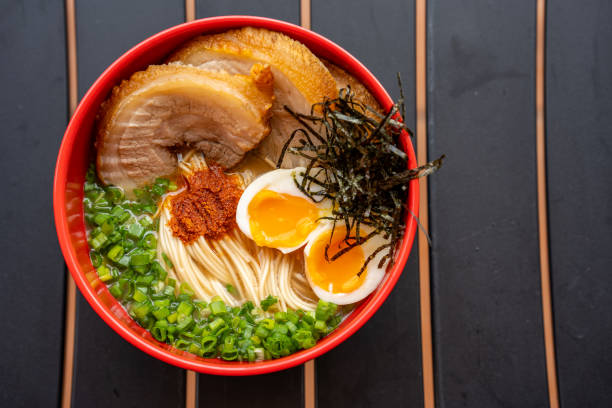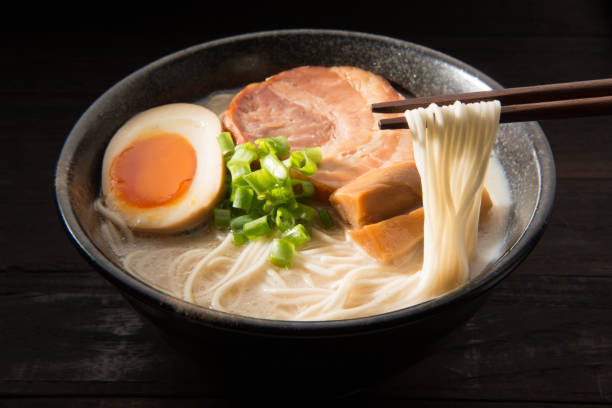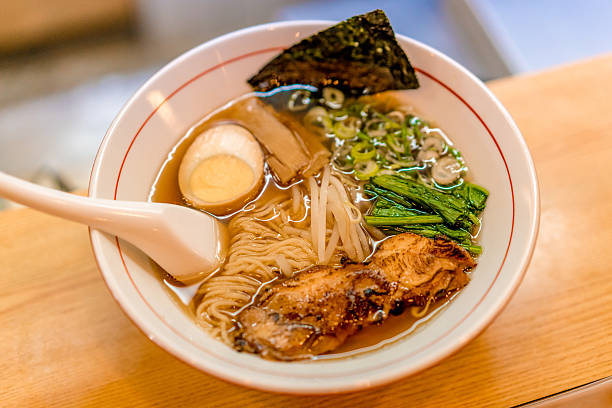Ramen noodles are a type of wheat-based, Japanese noodle that has become popular around the world for their quick cooking time and versatility in a variety of dishes. While they are often associated with cheap, unhealthy meals due to their popularity among college students and their tendency to be packaged with artificial flavors and preservatives, there are also many healthier options available. One important factor to consider when deciding how to incorporate ramen noodles into your diet is the calorie content. In this article, we will explore the calorie content of different types of ramen noodles, as well as some tips for making your ramen noodle meals healthier.
One of the main reasons that people are interested in the caloric content of ramen noodles is because they are often marketed as being a low-calorie food. However, the truth is that the caloric content of ramen noodles can vary significantly depending on the specific type and brand of noodles, as well as how they are prepared.
To give you an idea of the range of caloric content in ramen noodles, we will look at a few different examples.
First, let’s take a look at the calorie content of some common types of ramen noodles. It’s important to note that the calorie content can vary significantly depending on the brand, flavor, and preparation method.
Instant ramen noodles: One of the most well-known types of ramen noodles is the instant variety, which comes in a small, lightweight package and can be cooked in just a few minutes by adding hot water. A single serving of instant ramen noodles (usually one package) can contain anywhere from 200 to 600 calories, depending on the brand and flavor. Many instant ramen noodles are high in calories due to the addition of oil and other high-calorie ingredients in the seasoning packet.
Fresh ramen noodles: Fresh ramen noodles, which are typically found in the refrigerated section of the grocery store, have a higher calorie content than instant ramen noodles due to their higher protein and fat content. One serving of fresh ramen noodles (usually two ounces) contains around 200 calories.
Dried ramen noodles: Dried ramen noodles, which are similar to pasta, have a lower calorie content than fresh or instant ramen noodles. One serving of dried ramen noodles (usually two ounces) contains around 160 calories.
Now that we’ve looked at the calorie content of different types of ramen noodles, let’s discuss some ways to make your ramen noodle meals healthier.
Use less of the seasoning packet: One way to reduce the calorie content of your ramen noodle dish is to use less of the seasoning packet that comes with instant ramen noodles. The seasoning packet is usually high in sodium and added sugars, which can contribute to the overall calorie content of the dish.
Add vegetables: Adding vegetables to your ramen noodle dish is a great way to increase the nutritional value and reduce the calorie content. Try adding sliced carrots, bell peppers, and greens such as spinach or bok choy.
Use low-sodium broth: Another way to reduce the calorie and sodium content of your ramen noodle dish is to use low-sodium broth instead of the broth that comes with instant ramen noodles. You can also use water and add your own seasoning, such as soy sauce or miso paste, to taste.
Choose whole grain ramen noodles: If you are looking to increase the fiber and nutrient content of your ramen noodle dish, choose whole grain ramen noodles instead of regular wheat noodles. Whole grain ramen noodles are made with whole wheat flour and have a higher fiber and nutrient content.
In addition to the type and brand of noodles, the caloric content of ramen noodles can also be affected by the way that they are prepared. For example, if you add a lot of oil or butter to your noodles while cooking them, this can significantly increase their caloric content. Similarly, if you add a lot of additional ingredients, such as vegetables or protein, this can also increase the caloric content of your ramen noodles.
Finally, it is important to consider the broth in which the noodles are served. Some broths, particularly those made with a lot of oil or fat, can add significantly to the caloric content of your ramen noodles.
Overall, it is clear that the caloric content of ramen noodles can vary significantly depending on the specific type and brand of noodles, as well as how they are prepared. While it is possible to find low-calorie options, it is important to be mindful of the caloric content of your ramen noodles and to consider the other nutritional aspects of this food as well.
In conclusion, the caloric content of ramen noodles can range from 190 calories (for one serving of Maruchan noodles) to 290 calories (for one serving of Nissin Top Ramen noodles). However, it is important to consider the specific type and brand of noodles, as well as how they are prepared and served, when determining the caloric content of your ramen noodles. As with any food, it is important to be mindful of the caloric content of ramen noodles and to consider the other nutritional aspects of this food as well.

 Home
Home Health
Health Diet & Nutrition
Diet & Nutrition Living Well
Living Well More
More













